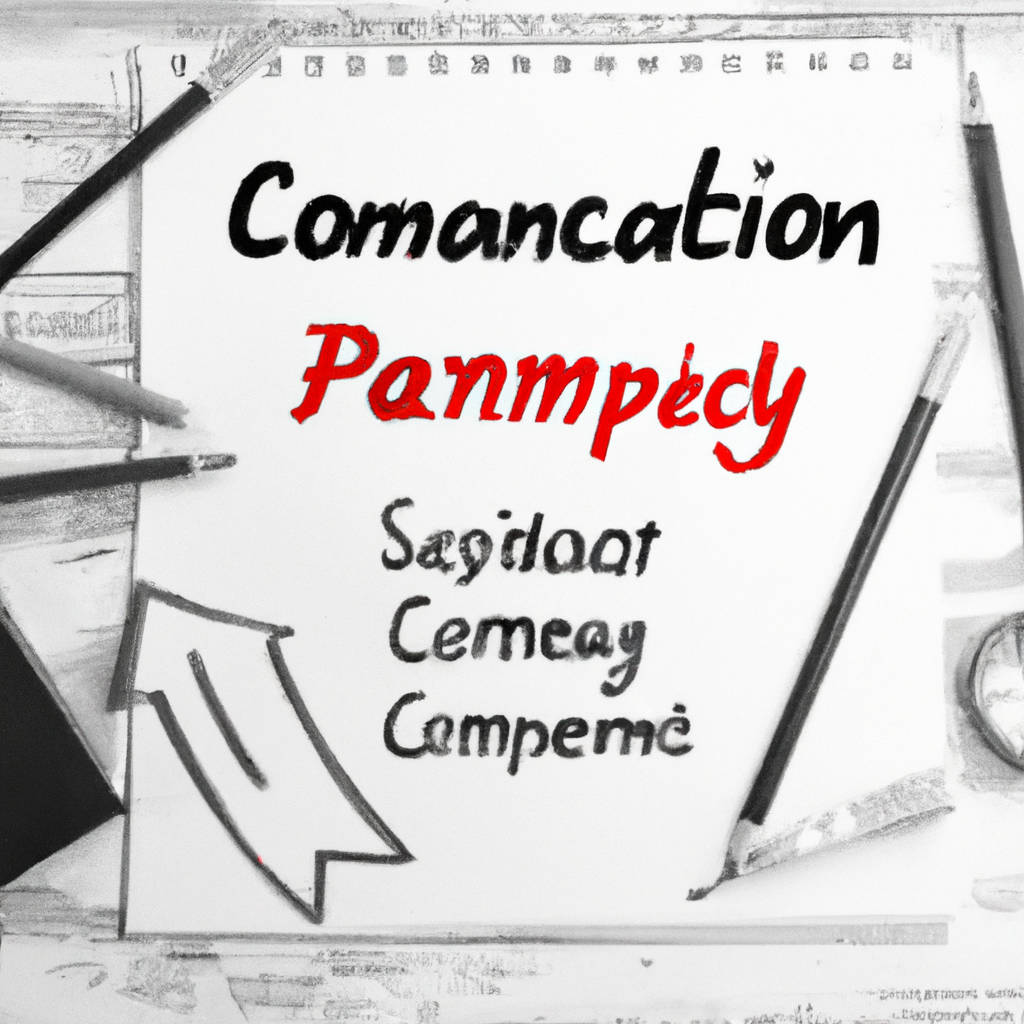Effective communication is essential in any organization to ensure that messages are clear, concise, and consistent. A communication plan is a strategic tool that outlines how information will be shared within an organization and with external stakeholders. To create an effective communication plan, it is important to first identify the key messages that need to be communicated and the target audience for those messages.
This will help to ensure that the information is tailored to the needs and interests of the intended recipients. Additionally, it is important to consider the most effective channels for delivering the messages, whether that be through email, social media, or face-to-face meetings. By selecting the appropriate channels, organizations can maximize the reach and impact of their communication efforts. Another key element of a communication plan is establishing a timeline for when messages will be delivered and who will be responsible for their dissemination. Setting deadlines and assigning responsibilities will help to ensure that communication efforts are coordinated and executed in a timely manner.
Finally, it is important to regularly evaluate the effectiveness of the communication plan and make adjustments as needed. By monitoring feedback and engagement metrics, organizations can identify areas for improvement and refine their communication strategies accordingly. Overall, a well-crafted communication plan is a valuable tool for organizations to ensure that their messages are effectively communicated and understood by all stakeholders.

Crafting a Comprehensive Communication Strategy
Crafting a comprehensive communication strategy is essential for any organization looking to effectively reach its target audience and achieve its goals. A successful communication strategy requires careful planning and consideration of various factors, including the organization’s objectives, target audience, messaging, and channels of communication. By taking the time to identify key stakeholders and their specific needs and preferences, organizations can tailor their communication efforts to effectively engage and inform their audience.
This may involve using a mix of traditional and digital communication channels, such as social media, email marketing, and public relations, to ensure that messages reach the right people at the right time. Additionally, a comprehensive communication strategy should include a clear and consistent messaging framework that reflects the organization’s values and goals, helping to build trust and credibility with stakeholders.
Regular evaluation and feedback are also crucial to ensure that the communication strategy remains relevant and impactful. By investing time and resources into crafting a comprehensive communication strategy, organizations can enhance their reputation, build relationships with their audience, and ultimately achieve their desired outcomes.
Identifying Key Stakeholders and Audience Segmentation
Identifying key stakeholders and audience segmentation is crucial for any organization looking to effectively communicate and engage with their target audience. By understanding who the key stakeholders are in a particular issue or project, organizations can tailor their messaging and outreach efforts to address the specific needs and concerns of these individuals or groups.
This not only helps to build trust and credibility with stakeholders but also ensures that the organization’s efforts are more impactful and successful. Audience segmentation, on the other hand, involves dividing a larger audience into smaller, more homogeneous groups based on demographic, psychographic, or behavioral characteristics. This allows organizations to create more targeted and personalized communication strategies that are more likely to resonate with specific segments of their audience.
By identifying key stakeholders and segmenting their audience, organizations can improve their overall communication and engagement efforts, leading to more effective outcomes and stronger relationships with stakeholders. Ultimately, understanding the needs and preferences of key stakeholders and audience segments is essential for organizations to achieve their goals and make a positive impact on their target audience.

Establishing Clear Objectives and Goals
Establishing clear objectives and goals is essential for success in any endeavor. Without a clear direction to work towards, it can be difficult to make progress and achieve desired outcomes. By setting specific and measurable objectives, individuals and organizations can create a roadmap for success and track their progress along the way. This allows for better decision-making, resource allocation, and overall efficiency.
When objectives and goals are clearly defined, it becomes easier to prioritize tasks, stay focused, and ultimately achieve success. Additionally, clear objectives can help motivate and inspire individuals to push themselves to new heights and strive for excellence. By establishing clear objectives and goals, individuals and organizations can set themselves up for success and ensure that they are working towards a common purpose.
This can lead to increased productivity, improved teamwork, and ultimately, the achievement of desired outcomes. In conclusion, establishing clear objectives and goals is crucial for success in any endeavor, as it provides a clear direction, motivates individuals, and helps track progress towards achieving desired outcomes.
Choosing Appropriate Communication Channels
When it comes to choosing appropriate communication channels, it is important to consider the audience and the message being conveyed. Different communication channels have varying levels of effectiveness depending on the context and purpose of the communication. For example, for a formal business meeting, email or a phone call may be more appropriate than a casual text message. On the other hand, for quick updates or informal conversations, a text message or instant messaging platform may be more suitable.
It is also important to consider the preferences of the audience when choosing a communication channel. Some people may prefer face-to-face communication, while others may prefer written communication. Additionally, factors such as urgency, confidentiality, and the nature of the relationship between the sender and receiver should also be taken into account when selecting a communication channel. By choosing the appropriate communication channel, individuals can ensure that their message is effectively delivered and received by the intended audience. Ultimately, effective communication is essential for building and maintaining relationships, both personally and professionally.

Developing Engaging Content and Messaging
Developing engaging content and messaging is crucial for capturing the attention of your target audience and effectively communicating your message. To create content that resonates with your audience, it is important to first understand who they are and what they are interested in. This involves conducting thorough research on their demographics, preferences, and behaviors. Once you have a clear understanding of your audience, you can tailor your content to meet their needs and interests.
This may involve using engaging visuals, compelling storytelling, or interactive elements to capture their attention and keep them engaged. Additionally, it is important to consider the tone and voice of your messaging to ensure that it aligns with your brand and resonates with your audience. By creating content that is relevant, relatable, and valuable to your audience, you can build a strong connection with them and encourage them to take action. Ultimately, developing engaging content and messaging requires a deep understanding of your audience, creative thinking, and a commitment to delivering high-quality, impactful content that drives results.
Implementing Timely Delivery and Feedback Mechanisms
Implementing timely delivery and feedback mechanisms is crucial for the success of any organization. By ensuring that products or services are delivered on time, businesses can maintain customer satisfaction and loyalty. Additionally, providing timely feedback allows for continuous improvement and growth within the organization. It enables employees to understand their performance and make necessary adjustments to meet the company’s objectives.
Timely delivery and feedback mechanisms also help in identifying any issues or bottlenecks in the workflow, allowing for quick resolution and preventing any potential delays. This proactive approach not only enhances efficiency but also fosters a culture of accountability and responsibility within the organization. By establishing clear timelines and communication channels, companies can streamline their operations and ensure that deadlines are met consistently.
Furthermore, feedback mechanisms provide valuable insights into customer preferences and expectations, allowing businesses to tailor their products or services to meet market demands effectively. Overall, implementing timely delivery and feedback mechanisms is essential for driving success and growth in today’s competitive business landscape. It promotes transparency, communication, and continuous improvement, ultimately leading to increased productivity and profitability.

Evaluating Effectiveness and Making Adjustments
Evaluating the effectiveness of a strategy, program, or initiative is crucial in order to ensure that it is achieving its intended goals and objectives. By carefully analyzing data, feedback, and outcomes, organizations can determine whether their efforts are making a positive impact and where adjustments may be necessary. This process involves taking a comprehensive look at all aspects of the initiative, including its implementation, resources, and overall impact.
It is important to consider both quantitative and qualitative data in order to gain a complete understanding of the effectiveness of the initiative. Once this evaluation has been completed, organizations can then make informed decisions about any adjustments that may be needed to improve the effectiveness of the initiative. These adjustments may involve reallocating resources, changing strategies, or revising the goals and objectives of the initiative.
By continuously evaluating effectiveness and making adjustments as needed, organizations can ensure that their efforts are making a meaningful impact and are aligned with their overall mission and objectives. This ongoing process of evaluation and adjustment is essential for organizations to remain responsive and adaptable in an ever-changing environment. Ultimately, by regularly assessing the effectiveness of their initiatives and making adjustments as necessary, organizations can maximize their impact and achieve their desired outcomes.